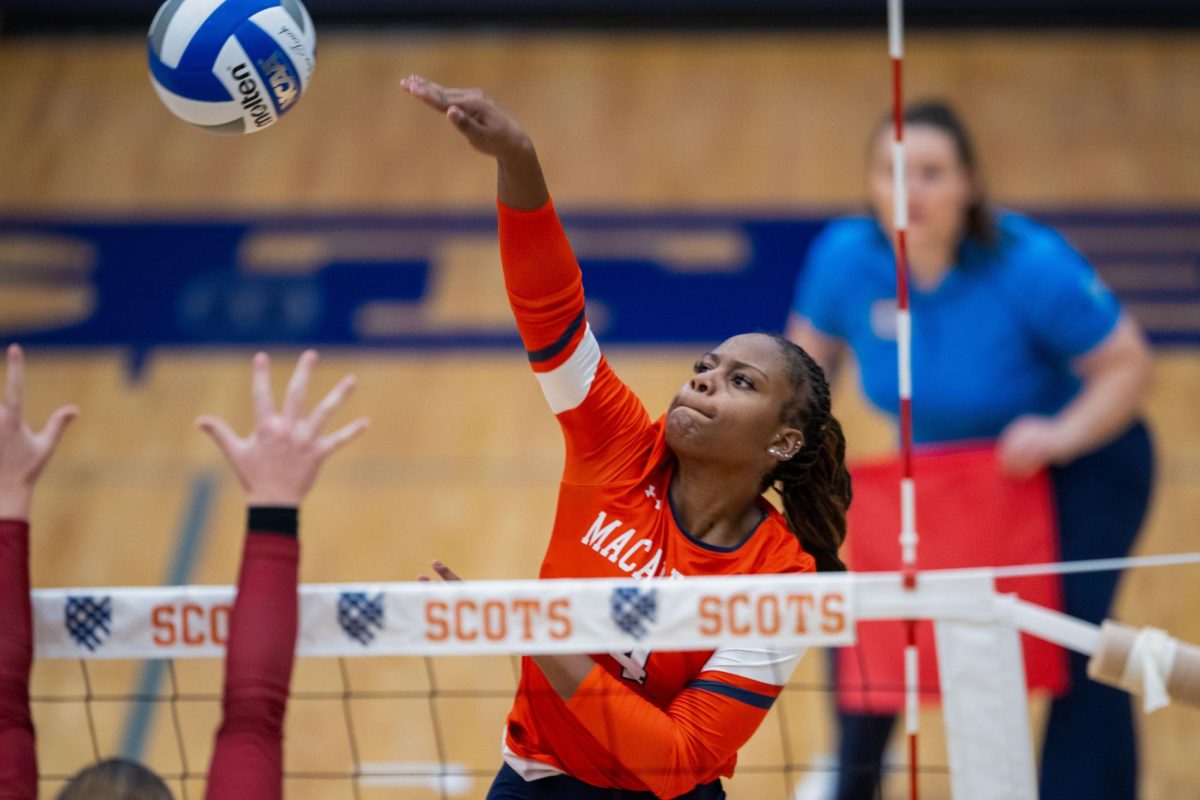Second teams for college programs often function as a purgatory for younger players unready for prime time. Yet, the Macalester men’s soccer team treats its second team (2-1-1) not as an inferior entity, but rather as a part of a larger, undivided 42-man roster. Head coach Gregg Olson and first assistant Mike Madigan, who serves as the head coach of the second team, strive to create two fluid rosters “based on performance, not reputation,” according to Olson.
There are no official first team nor second team players, rather the two rosters are determined the night before a game and vary substantially from game to game. Olson likens his method for determining the rosters to the promotion and relegation system in European soccer leagues, in which the worst performing teams are sent down to a lesser division and replaced by the best teams of that lesser division.
The two squads practice together 80 percent of the time, and split-up only the night before a game to prepare for a specific opponent. Due to Minnesota Intercollegiate Athletic Conference (MIAC) rules, the first team can carry only 22 players for any road game and up to 28 for a home game, meaning that opportunities open and close for second team players attempting to move up.
“The roster [is determined] by game, but there are [permanent] first team guys,” Olson said.
These established stars are primarily the team’s senior leaders and first years, thanks to an unusually strong and talented incoming class. The abundance of regular first team players among the first years points to the lack of class bias involved in the roster making process. The sophomore and junior classes tend to be divided equally between the first and second teams, while both the senior and freshman classes have far more representatives on the first team than in previous seasons.
Many of those who do not fit into Olson’s description of “first team guys” fall into a category he calls “bubble guys.” “The most important part of the second team is the guys who might not play with the first eleven or might not even be on the first team roster,” Olson said. “It’s the bubble group of guys who can bump up that year or develop for next year.”
Three such athletes are James Hargens ’17 (St. Paul, Minn), Wilson Merrell ’16 (Poughkeepsie, N.Y.) and Kovas Zygas ’16 (La Grange, Ill).
Zygas, whom Olson named the captain of the second team at the beginning of the season, and Merrell both have spent the majority of their two years as second team regulars. Hargens, on the other hand, spent most of the early games on the first team and has since seen all of his time on the second team.
Hargens’ demotion from first team to second team was “a bit of a hit in confidence, but that’s okay,” Olson said.
The reality of the constantly changing roster means that everyone’s spot is in jeopardy and thus raises the level of competition.
As for opportunities to move up, “There’s a core group of first team guys who are usually on the roster, and then there are five spots available for anyone who can step up in the few training sessions before the roster goes out,” Merrell said.
“Everyone is competing for those five spots,” Hargens said.
When asked about the tension that such competition inevitably brings about, Merrell explained, “It’s disappointing not to see your name on the list, but you’re also happy for the guys who get to go.”
Merrell and Zygas both stressed how comfortable they were with their roles on the second team. “Realistically, Kovas and my role is to bring experience to the second team,” Merrell said. “We help the freshmen who are bouncing between teams a lot.”
Despite how integral they both are to the identity of the mercurial second team, Merrell and Zygas acknowledge that the second team is not where they hope to spend the rest of their careers. “At the beginning of the season, my goal is to be on the first team,” Zygas said. “I’m not fighting for every single game. If I play great in practice, it’s not going to have an immediate effect on the next game’s roster. In the long run, my goal is to be on first team, to play on first team, and to start on first team.”
The fluidity between the first and second team rosters creates a cohesive squad from top to bottom. As Olson claims, “The success of our program is 42 players deep.”.







Robert Gill • Sep 10, 2019 at 9:05 pm
Thanks for the different tips discussed on this site. I have seen that many insurance carriers offer shoppers generous reductions if they elect to insure a few cars together. A significant number of households currently have several cars or trucks these days, particularly those with more mature teenage children still located at home, along with the savings in policies might soon mount up. So it is good to look for a great deal.
Emily Morrison • Sep 8, 2019 at 10:02 pm
Undeniably believe that which you stated. Your favourite justification seemed to be at the net the simplest factor to bear in mind of. I say to you, I certainly get annoyed at the same time as other folks think about issues that they plainly don’t recognise about. You controlled to hit the nail upon the highest as well as defined out the whole thing without having side-effects , folks could take a signal. Will probably be again to get more. Thanks